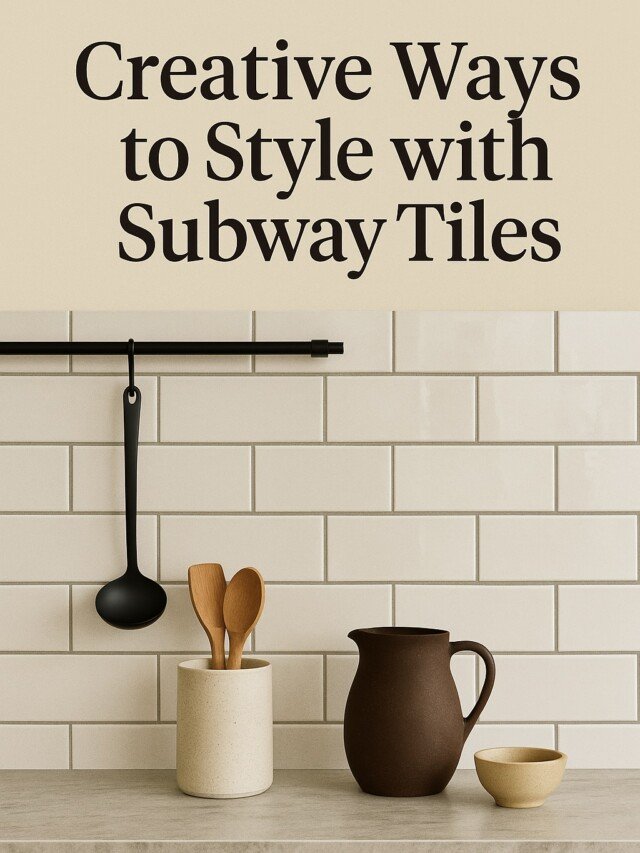Tiles Testing Methods: Exploring ISO Standards for Precision and Durability
When it comes to choosing tiles that last, understanding how they are tested is crucial. At Ramirro Ceramica, we are committed to delivering premium-quality tiles that meet the highest international standards. One of the key ways to ensure tile performance and reliability is by following globally recognized ISO standards. In this guide, we will explore the most important tiles testing methods, showing how precision, durability, and quality are measured. Whether you’re a homeowner, architect, or contractor, knowing these standards can help you make better, more informed decisions.
Tiles That Last a Lifetime: Why Testing Methods Matter More Than You Think
When you invest in tiles, you expect them to stand the test of time — but not all tiles are created equal. That’s why tile testing methods are more important than most people realize. Rigorous testing isn’t just a manufacturing formality; it’s the foundation of customer trust and long-term performance. To guarantee strength, durability, and quality, manufacturers follow globally recognized ISO standards and India’s trusted ISI standards. These benchmarks ensure that every tile you choose has been tested for real-world demands, giving you peace of mind for years to come.
ISO Standards Explained: What Makes a Tile ‘Certified’?
When you hear a tile is “ISO certified,” it means it has passed strict international tests for quality and performance. Specifically for ceramic tiles, the ISO 10545 series sets the global standard. These tests cover everything from water absorption and strength to chemical resistance and surface quality. In simple terms, ISO certification means three things: durability, consistency, and safety. Tiles that meet ISO 10545 standards are built to last, perform reliably in all conditions, and ensure safe use in homes, offices, and public spaces.
Real-World Tile Quality Checks: Key Tests and Standards You Should Know
| CHARACTERISTIC | STANDARD AS PER ISO-13006/EN14411 GROUP Bla | MEAN VALUE OF PGVT | MEAN VALUE OF GVT | TEST METHOD |
|---|---|---|---|---|
| Deviation in length & width | ± 0.5% | ±0.1% | ±0.1% | ISO-10545-2 |
| Deviation in thickness | ± 5.0% | ± 5.0% | ± 5.0% | ISO-10545-2 |
| Straightness in side | ± 0.5% | ± 0.1% | ± 0.1% | ISO-10545-2 |
| Rectangularity | ± 0.6% | ± 0.1% | ± 0.1% | ISO-10545-2 |
| Surface flatness | ± 0.5% | ± 0.2% | ± 0.2% | ISO-10545-2 |
| Color difference | Unaltered | No change | No change | ISO-10545-16 |
| Glossiness | As per mfg. | Min 90% | Min 4% | GLOSSOMETER |
| Water absorption | < 0.50% | < 0.20% | < 0.20% | ISO-10545-3 |
| Apparent density | > 2.0 g/cc | > 2.10 g/cc | > 2.10 g/cc | DIN 51082 |
| Modulus of rupture | Min. 35 N/mm² | Min. 40 N/mm² | Min. 40 N/mm² | ISO-10545-4 |
| Breaking strength | Min. 1300 N | Min. 1700 N | Min. 1700 N | ISO-10545-4 |
| Impact resistance | As per mfg. | Min. 0.55 | Min. 0.55 | ISO-10545-5 |
| Surface abrasion resistance | As per mfg. | Min. Class-3 | Min. Class-4 | ISO-10545-7 |
| MOH’s hardness | As per mfg. | Min. 4 | Min. 5 | EN 101 |
| Frost resistance | No damage | No damage | No damage | ISO-10545-12 |
| Thermal shock resistance | No damage | No damage | No damage | ISO-10545-9 |
| Moisture expansion | Nil | Nil | Nil | ISO-10545-10 |
| Thermal expansion (COE) | Max. 9.0 × 10⁻⁶ | Max. 6.5 × 10⁻⁶ | Max. 6.5 × 10⁻⁶ | ISO-10545-8 |
| Crazing resistance | As per mfg. | Min. 10 Cycle | Min. 10 Cycle | ISO-10545-11 |
Deviation in Length & Width Test: Ensuring Perfect Tile Alignment
Precision in tile size is crucial to achieve a flawless, gap-free installation. The Deviation in Length & Width Test (ISO-10545-2) checks whether the tiles stay within a tolerance of ±0.5%. In this test, tiles are measured along multiple sides to ensure they have consistent dimensions. Proper sizing prevents visible gaps, uneven joints, and misaligned patterns. This helps tiles fit together perfectly and gives a seamless, professional finish to floors and walls.
Deviation in Thickness Test: Building Strong and Even Surfaces
Uniform thickness across all tiles ensures that the finished surface is even and stable. According to ISO-10545-2 standards, the deviation should not exceed ±5.0%. During the Deviation in Thickness Test, multiple points on each tile are measured to check for consistency. Consistent thickness helps prevent issues like uneven floors, tripping hazards, and structural weaknesses. It also ensures better bonding with adhesives and smoother installation results.
Straightness in Side Test: Creating Seamless Tile Lines
Straight-edged tiles are important for fast, clean, and accurate installations. The Straightness in Side Test (ISO-10545-2) measures whether the tile sides deviate more than ±0.5%. Tiles are tested along their edges using precise instruments to confirm their straightness. When tiles have straight sides, they align neatly without overlapping or leaving visible gaps. This results in a smoother surface and enhances the overall appearance of tiled spaces.
Rectangularity Test: Guaranteeing Perfect Corners and Angles
For tiles to fit properly in patterns and grids, they must have accurate 90° corners. The Rectangularity Test (ISO-10545-2) checks that the deviation in angles does not exceed ±0.6%. By measuring the diagonals, the test ensures that tiles maintain a true rectangular shape. Proper rectangularity is essential for clean layouts, especially when creating complex patterns. It also speeds up installation and avoids gaps or misalignments in tile designs.
Surface Flatness Test: Achieving Smooth, Professional Finishes
Surface flatness is a key quality factor for any tile project. The Surface Flatness Test (ISO-10545-2) checks if the tile has any warping, dips, or raised areas, with a maximum deviation of ±0.5%. In this test, tiles are examined carefully across their surface. Flat tiles ensure proper bonding to the floor or wall substrate, prevent trip hazards, and create a polished and even look. This is crucial for both safety and aesthetics in any space.
Color Difference Test: Keeping Tile Colors Consistent
Color uniformity ensures a visually harmonious space, especially in large tile installations. The Color Difference Test (ISO-10545-16) checks that there are no significant color variations between batches. This test involves visual inspection as well as instrumental analysis to ensure consistent shades. Consistent tile color avoids awkward patches or mismatched areas on floors and walls. It ensures that every tile seamlessly blends into the overall design.
Glossiness Test: Controlling the Shine for Design Impact
Gloss levels directly affect how a tile interacts with light and influences the space’s ambiance. Using a glossometer, manufacturers measure how much light tiles reflect to achieve the desired finish. Tiles can range from high-gloss to matte finishes depending on design needs. Controlling gloss ensures that tiles match project specifications, whether it’s for a shiny, luxurious look or a soft, understated effect. It also affects maintenance and cleaning requirements.
Water Absorption Test: Predicting a Tile’s Lifespan
Tiles that absorb too much water can become weak, stained, or damaged over time. The Water Absorption Test (ISO-10545-3) measures how much water a tile absorbs after being soaked. To pass, tiles should have water absorption below 0.50%. Low water absorption prevents problems like mold, mildew, staining, and frost damage. This makes the tiles more durable and reliable, especially for wet areas like bathrooms, kitchens, and outdoor spaces.
Apparent Density Test: Measuring Tile Strength and Compactness
Density plays a major role in a tile’s strength, durability, and performance. The Apparent Density Test (DIN 51082) measures how much mass is packed into a specific volume of tile material. A higher density usually means the tile will be stronger, more impact-resistant, and less porous. Dense tiles are better suited for heavy-duty applications and are less likely to crack under pressure or absorb moisture, ensuring a longer lifespan.
Modulus of Rupture Test: Testing Tile Flexibility and Strength
Tiles must be strong enough to resist breaking when subjected to bending forces. The Modulus of Rupture Test (ISO-10545-4) measures the amount of pressure needed to crack a tile by bending it. Tiles that pass this test are more flexible and resilient under stress. High rupture strength ensures that tiles can withstand foot traffic, heavy furniture, and slight ground movements without damage. This makes them ideal for both residential and commercial spaces.
Breaking Strength Test: Ensuring Load Resistance in Tiles
The Breaking Strength Test (ISO-10545-4) checks how much direct force a tile can withstand before breaking. This is especially important for floor tiles in areas with heavy furniture or equipment. Tiles that meet or exceed strength standards are less likely to crack under heavy loads. Strong breaking strength ensures a longer service life and better performance even under constant pressure, making the tiles more reliable for various applications.
Impact Resistance Test: Gauging Durability Against Daily Accidents
Tiles often face accidental impacts from dropped items like utensils, tools, or furniture. The Impact Resistance Test (ISO-10545-5) measures how much force a tile can absorb without chipping or cracking. A steel ball or weighted object is dropped onto the tile during testing. Good impact resistance ensures that tiles remain intact and maintain their appearance even after daily accidents, making them suitable for busy households and commercial spaces.
Surface Abrasion Resistance Test: Defining Tile Wear Over Time
Tiles installed in high-traffic areas must resist surface wear and scratching. The Surface Abrasion Resistance Test (ISO-10545-7) checks how well tiles withstand rubbing and abrasive forces. Tiles are exposed to abrasive wheels to simulate years of foot traffic. High abrasion resistance helps tiles maintain their look and texture even after years of use, making them ideal for shopping malls, airports, offices, and busy home areas.
MOH’s Hardness Test: Checking Scratch Resistance
The MOH’s Hardness Test (EN 101) measures how resistant a tile is to scratches. In this test, the tile surface is scratched using minerals of known hardness values. A higher MOH rating means the tile can resist damage from common hazards like dragging furniture, pet claws, or dropped utensils. Scratch resistance is vital for preserving the tile’s beauty, especially in homes, kitchens, lobbies, and other active areas.
Frost Resistance Test: Preparing Tiles for Cold Climates
Tiles used outdoors or in freezing climates must endure extreme cold without cracking. The Frost Resistance Test (ISO-10545-12) subjects tiles to multiple freeze-thaw cycles to test their durability. Passing this test means the tiles can handle temperature fluctuations without damage. Frost-resistant tiles are ideal for outdoor patios, driveways, terraces, and pool decks in regions with harsh winters and frequent frost.
Thermal Shock Resistance Test: Withstanding Rapid Temperature Changes
Tiles often experience sudden temperature shifts, especially near ovens, fireplaces, or outdoor areas. The Thermal Shock Resistance Test (ISO-10545-9) rapidly heats and cools tiles to test for cracks or other damage. Tiles that withstand this stress stay strong and maintain their structure. This durability is critical for areas exposed to direct sunlight, fire, or changing weather conditions.
Moisture Expansion Test: Securing Dimensional Stability
Moisture can cause materials to swell or change shape over time, but high-quality tiles resist this. The Moisture Expansion Test (ISO-10545-10) measures how much a tile expands when soaked in water. Ideally, there should be no expansion at all. Zero moisture expansion ensures tiles remain firmly in place and prevents problems like lifting, bulging, or cracking, protecting the floor’s integrity for years.
Thermal Expansion (COE) Test: Maintaining Shape Through Heat
All materials expand slightly when heated, but tiles should expand within safe limits. The Thermal Expansion Test (ISO-10545-8) measures the Coefficient of Expansion (COE) to ensure controlled movement. Tiles with a low COE are less likely to crack or shift with seasonal temperature changes. This ensures durability and stability across floors and walls, even in places with extreme heat or cold.
Crazing Resistance Test: Defending Against Fine Surface Cracks
Crazing refers to the development of fine cracks on a tile’s glaze that can spoil its appearance. The Crazing Resistance Test (ISO-10545-11) subjects tiles to repeated heating and cooling cycles to test their surface integrity. Tiles that resist crazing maintain a beautiful, smooth finish even after years of use. This is important for both aesthetics and ensuring the tile’s long-term durability.
Testing & Benchmark ISI Methods Parameters: Setting Indian Standards
In the Indian market, ensuring tile quality means aligning with strict Testing & Benchmark ISI Methods Parameters. ISI (Indian Standards Institute) benchmarks are designed to meet the unique challenges of India’s climate, usage patterns, and architectural demands. These parameters focus on critical factors like strength, water absorption, impact resistance, and surface quality, ensuring that tiles perform reliably under real-world Indian conditions.
Tiles that meet both Indian ISI and global ISO standards offer an ideal combination of local relevance and international quality. This dual approach ensures that tiles are optimized for the tough, everyday conditions of Indian homes, businesses, and outdoor spaces, while also providing the durability and performance expected in global markets.
Why Choosing Properly Tested Tiles Means Peace of Mind — And Why Ramirro Ceramica Leads the Way
Proper testing is essential to ensure that tiles perform flawlessly in any environment. From clay ceramics fired in a kiln to the application of new glazes, every step plays a crucial role in durability, aesthetics, and functionality. Tiles undergo a rigorous process of glaze testing to assess factors like texture, strength, and the dry surface finish. Test tiles—whether made with different glazes, layered glazes, or tiles using various thicknesses—are carefully tested and experimented to guarantee performance under real-world conditions. For example, glaze testing helps understand how transparent glaze and different thicknesses of glazes together behave, ensuring consistency in both visual appeal and structural integrity.
The way to make high-quality tiles involves making test tiles, testing them by rolling them for stress, or observing their vertical and upright properties. Whether testing tiles for fired finishes or experimenting with glazes before applying them, every detail counts. By always testing tiles thoroughly, we ensure that they not only look great but also last longer.
At Ramirro Ceramica, our focus on precision and internationally certified tiles ensures that each tile—whether a slab, a textured surface, or a glaze variation—is performance approved. Discover Ramirro’s internationally certified tiles — precision tested, performance approved.








